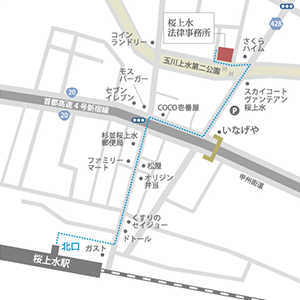Vault Architecture Definition
It is important to note that while Roman vaults, such as that of the Pantheon, and Byzantine vaults, such as that of Hagia Sophia, were not protected from above (i.e. the vault from the inside was the same as the one seen from the outside), European architects of the Middle Ages protected their vaults with wooden roofs. In other words, you won`t see a Gothic vault from the outside. The reasons for this development are hypothetical, but the fact that the shape of the covered basilica preceded the time when the vaults were made must certainly be taken into account. In other words, the traditional image of a roof has taken precedence over the vault. The fan-shaped vault seems to owe its origin to the use of centering of a curve for all ribs, rather than having separate centering for the transverse, diagonal and intermediate ribs; It was also facilitated by the introduction of the four-centric arch, since the lower part of the arch was part of the fan or coroid, and the upper part could be extended at will with a greater radius above the vault. These ribs were often carved from the same stones as the walkways, the entire vault being treated as a single joint surface covered with interlocking interlacing. [19] Vault, in the construction of buildings, a structural element consisting of an arrangement of arches that usually form a ceiling or roof. The earliest known examples of barrel vaults were built by the Sumerians, perhaps under the ziggurat of Nippur in Babylon,[5] which was built from fired bricks cemented with clay mortar. [6] It is believed that the first barrel vaults of ancient Egypt are those of the granaries of Pharaoh Ramses II of the 19th dynasty, whose ruins are behind the Ramesseum in Thebes. [7] [8] [9] The range was 12 feet (3.7 m) and the lower part of the arch was built in horizontal orbits, up to about one-third of the height, and the rings above were tilted backwards at a slight angle, so that the bricks of each ring, laid flat until the ring was completed, without the need for centering; The vault thus formed was elliptical in section, which resulted from the nature of its construction. A similar building system was used for the vault above the great hall of Ctesiphon, where the material used was baked bricks or tiles of large dimensions, cemented with mortar; But the span was close to 83 feet (25 m), and the thickness of the vault was nearly 5 feet (1.5 m) at the top, there were four masonry rings. [10] A cross vault is a vault in which all cornices are covered by ribs or diagonal ribs in the form of segmental arches.
Their curvatures are defined by boundary arcs. While the transverse arches retain the same semicircular profile as their edge vaults, the longitudinal arches are pointed, with both arches having their centers on the transom line. As a result, the latter can better match the curvatures of the diagonal ribs, creating a straight tunnel that runs from east to west. [13] This form of vault is found in the late English Gothic, where the vault is built as a single cladding stone surface, the resulting conoid forming an ornamental network of blind interlacing. [11] Brick vaults have been used in Egypt since the beginning of the 3rd millennium BC. widespread and from the end of the 8th century BC Keystone vaults were built. However, the monumental buildings of the temples of the Pharaonic culture in the Nile Valley did not use vaults, because even the huge portals with a width of more than 7 meters were spanned by polished stone beams. [3] The actual construction of the vault with radially connected stones was already known to the Egyptians and Assyrians and was introduced by the Etruscans into the construction practice of the West. Above all, the Romans developed the construction of the vault and built barrel, cross and dome vaults. Some notable examples have survived in Rome, for example: the Pantheon and the Basilica of Maxentius. If a barrel vault is intersected perpendicularly by another barrel vault of the same size, a transverse vault or ridge vault is created. It is a very effective vault shape that allows full illumination on the sides.
The ridge vaults also allow great savings in material and labor compared to the simple barrel vault; The thrust is concentrated along the cornices (the four diagonal edges form along the points where the barrel vaults intersect), so the vault only needs to be struck at its four corners. In these cases, the continuous thrust of the barrel vault was greeted by semicircular or pointed barrel vaults on the aisles, which had only half the span of the nave; An interesting example of this can be found in the Chapel of St. John in the Tower of London – and sometimes by half-barrel vaults. However, the great thickness of the walls required for such constructions seems to have led to another solution to the problem of roofing churches with non-combustible material, namely that found throughout the Périgord and Charente, where a series of domes are supported on pendentives above the nave, The main peculiarities of these domes being the fact that the arches they carry are part of the pendants. which are all built in horizontal courses. [22] The separation between interior and exterior – and between structure and image – was to be developed in a very focused way in the Renaissance and beyond, especially after the dome was reintroduced into the Western tradition as a key element of church design. For example, Michelangelo`s dome for St. Peter`s Basilica in Rome, as redesigned by Giacomo della Porta between 1585 and 1590, consists of two domes, of which only the inner dome is structural. Baltasar Neumann perfected the light plaster vaults supported by wooden frames in his baroque churches. [24] These vaults, which did not exert lateral pressure, were ideal for elaborate ceiling frescoes. In St.
Paul`s Cathedral in London, there is a very complex system of vaults and vaults of art. [25] The dome seen from the outside is not a vault, but a relatively light structure with a wooden frame, resting on an invisible – and for its very original age – catenary vault made of brick, under which is another dome (the dome that can be seen from the inside), but in plaster supported by a wooden frame. From the inside, it`s easy to assume you`re looking at the same vault you`re seeing from the outside. Nineteenth-century builders who used new materials were able to build large iron skeletons as frames for vaults made of light materials – for example, the glass crystal palace of the Great Exhibition of 1851 in London. As the new materials eliminated weight and shear problems, the simple barrel vault was again preferred for structures such as railway terminals and exhibition halls. In many modern framing systems, the vault has lost its functional significance and has become a thin skin placed on a series of arches. The reinforced concrete vault, a curved or shaped slab, is an important innovation. The steel-reinforced shell does not exert lateral thrust and can be supported as a beam. In the anterior phase of the ribbed vault, the arched ribs consisted of independent or separate voussoirs up to suspension; However, the difficulty of machining the ribs separately led to two other important changes: (1) the lower part of the transverse diagonal and the ribs of the wall were all worked from a single flap; and (2) the lower horizontal, which forms what is called the load-TAS or solid spring. The pile or fixed jumper had two advantages: (1) it allowed the stone tracks to cross the wall directly to connect everything much better; and (2) it reduced the span of the vault, which then required smaller centering dimensions. Once the ribs were finished, the net or stone shell of the vault was placed on it.
In some English works, each stone entrance was of uniform height from side to side; However, as the diagonal rib was longer than the transverse or wall rib, the rails plunged towards the first and were cut at the top of the vault so that they matched.



